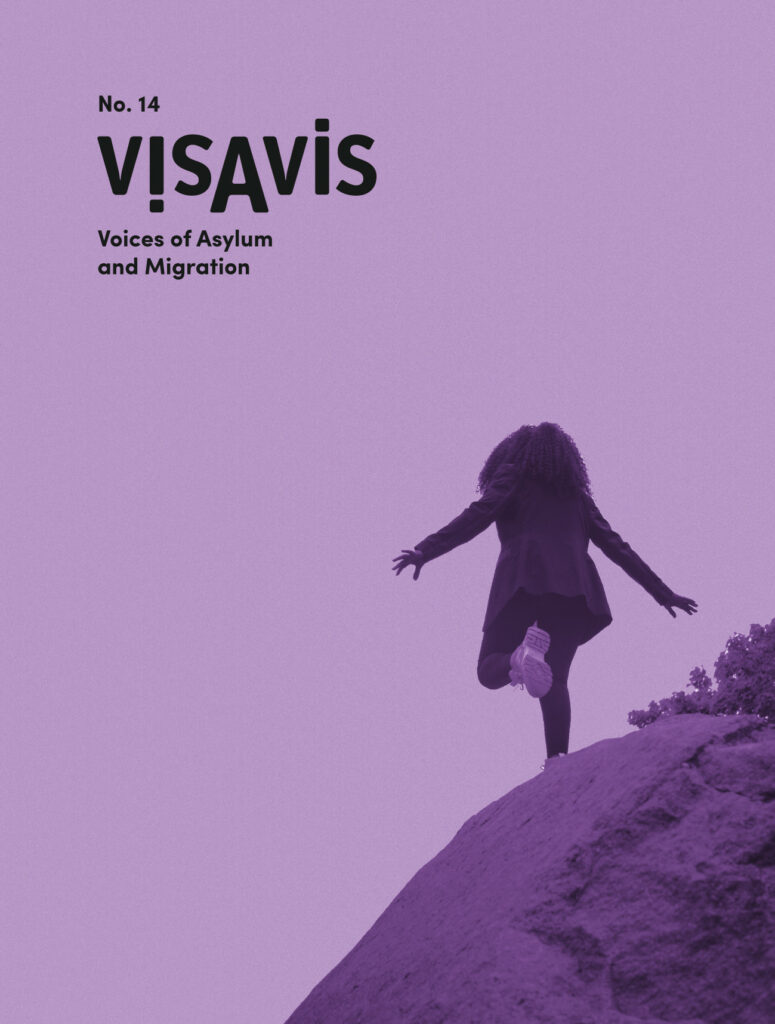the painting was made by a 9 year old girl who was enrolled in RCT in 1993
Danish legislation complicates traumatised refugees’ attempts to obtain asylum and residence permits. Researcher Edith Montgomery has published a report that reveals the problems in a system that does not make allowances for human aspects.
By Paula Nimand Duvå, Laura Na Blankholm and Nicoline Sylvest Simonsen
Faster asylum application processing and shorter waiting time.This is but one of the improvements that researcher Edith Montgomery demands of the Danish asylum system on the basis of her report ‘Trauma, Exile and Mental Health in Young Refugees,’ that was published in the journal Acta Psychiatrica Scandinavica Supplementum vol. 124 in September 2011.
Edith Montgomery is a specialist in child psychology and was formerly head of research of the RCT rehabilitation and research centre for victims of torture in Copenhagen.
In the report she describes how refugee children and young refugees’ health conditions are in some cases made worse in Denmark. The cause of this is the fact that prolonged asylum processing locks them in a waiting position during their long stays in asylum camps.
The long periods in which they stay in the camps are, among other things, due to tightening of national immigration laws. These laws mean that fewer families are given asylum in Denmark on the basis of having been subjected to torture or other kinds of human rights violations.
The reason for this is, among other things, that only rarely are allowances made for the mental health of the traumatised refugees through the phases of the asylum application procedure.
Traumatised people’s memory suffers
When you arrive in Denmark as a refugee seeking asylum, the first step in the asylum application procedure is an interview performed by the police. The interview focuses on why you have fled and is done to uncover why you are seeking asylum in Denmark.
However, many asylum seekers have been subjected to torture and persecution and are therefore seriously traumatised.
According to Edith Montgomery, the traumas often prevent asylum seekers from being able to remember the details of events they have been through.
Edith Montgomery explains to visAvis: “It can be complicated for people who are traumatised to provide a coherent explanation of what they’ve been subjected to. This means traumatised people may not be deemed trustworthy, and trustworthiness is essential to obtaining asylum.”
Contrary to this, the Danish Immigration Service, that makes decisions in asylum cases, believes special allowances are made when cases relating to this vulnerable group of people are being decided.
Jacob Dam Glynstrup, head of the Danish Immigration Service’s asylum office, says to visAvis:
“We’re fully conscious of the special allowances that must be made in relation to traumatised asylum seekers in terms of training of our staff and a continuous focus in our processing of cases. We agree entirely that allowances must be made for the reactions and cultural backgrounds of asylum seekers.”
Legislation that makes no allowances
Unfortunately, Danish legislation prevents the Danish Immigration Service from doing what it aims to do.
When the Danish Immigration Service applies the immigration laws that came into force in 2002 and aimed to “limit the number of foreigners who enter Denmark,” it does not make the required allowances.
On the contrary.
Edith Montgomery explains: ”Refugees who suffer from a basic fear of returning to their countries because of traumatic experiences – such as torture or rape – used to be able to obtain a residence permit. The tightening of Danish immigration laws means that residence permits are given only to people who are in direct danger of being subjected to the death penalty or torture if they return.”
This way of deciding asylum seekers’ cases – on the basis of a direct risk of the death penalty and torture – is confirmed by Jacob Dam Glynstrup:
He observes: “The pivotal element in an asylum case is to ascertain if asylum seekers – at the time when they apply – will be subjected to a risk relevant to Danish immigration laws if they return to their countries. Conditions – and possible changes – that apply in their countries therefore play a crucial role. We have, for instance, seen how this risk may be removed completely in a country such as Kosovo.”
As it has been stated earlier in this article, this is the very core of the problem: it is an almost impossible challenge to overcome for traumatised refugees when they have to prove there is a risk which is relevant to Danish immigration laws.
Facts:
– The report documents the exile-related traumas and the mental health of young refugees from the Middle East who have applied for asylum in Denmark
– The report contains a qualitative study of 11 children from families subjected to torture, a study of 14 members of families subjected to torture, a study of 311 three to 15 years old children seeking asylum and a follow-up study of 131 eleven to twenty-three years old refugees.
– The report concludes that psychological problems are frequent in refugee children and that the problems grow due to poor living conditions in exile.
– Living conditions are crucial to refugee children’s ability to recover from the traumas they suffered when they were very young.
